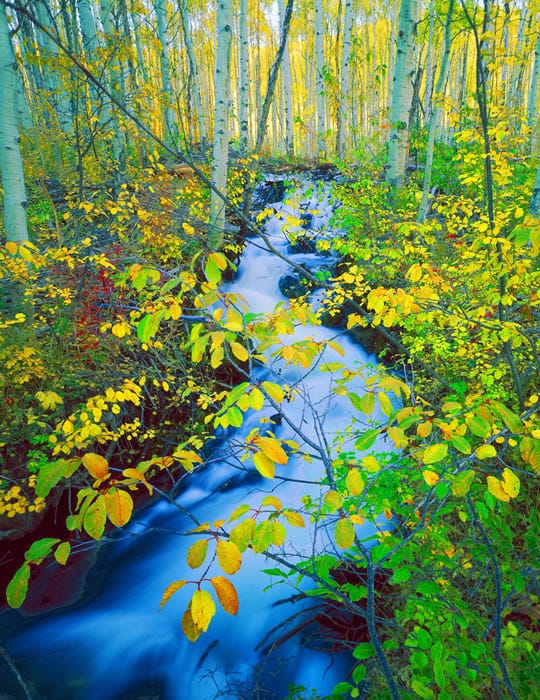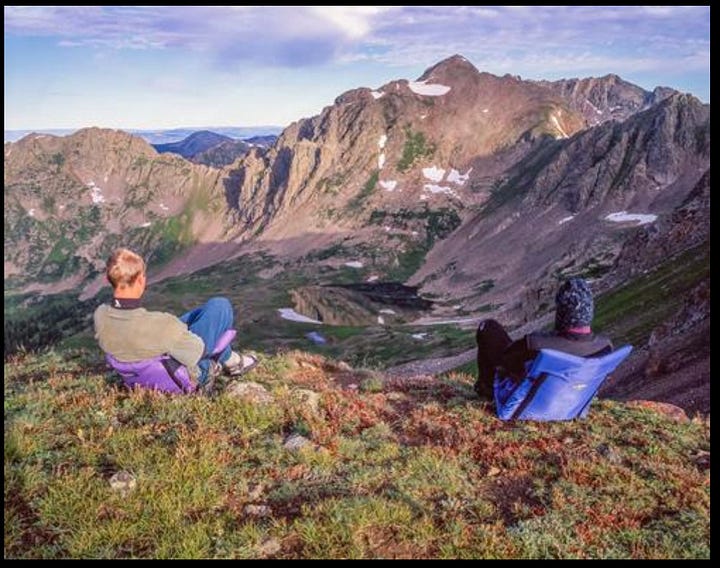Colorado lost one of our brightest icons last week. Photographer John Fielder passed away from cancer at age 73. His photos of the Colorado landscape and history have been donated to History Colorado for all to browse through. It’s worth the time to peruse a bit. To see the best of the best his website is: https://www.johnfielder.com/




I attended a one-day photography clinic with him some years ago. While I gleaned many small tips that day, it was the broad view of why to photograph to begin with, that I have remembered. Why photograph? No other creature does this. John started the class with a story, zooming way out into the universe and the distances between worlds that we have found, emphasizing that life, as we understand it, only exists here on Earth. He spoke of the intricate chemistry of our atmosphere that makes life possible, the interplay of geology, plant life, fungi, and animal life, and our own delicate eyes and these finite minds that can find the beauty of it. He took the photos because there is nowhere in the universe that you will find these views. Photos are for sight, but Fielder would comment that his being in the places to take those photos was a full sensory experience, not just sight, but sound, taste, touch, weather, and how the body is handling it all, warm, cold, fatigue, rain, snow, etc. By bringing the photos back for people to experience, there is also a taste of being there as well and a call to go see it and experience it for yourself, to appreciate being in a place that is like nowhere else in the universe (as far as we know today). Climate change remained a deep concern for him to the end and he felt the urgency to show these places before they are any more affected by the devastation of nature that is happening now before our eyes and in everyone’s experience.
“It’s all interconnected. Everything in the world depends on something else. And it won’t take much to forever alter an entire environment. When every element is connected to the others, like bricks in a wall, just removing a few bricks can bring the whole thing down.” - John Fielder
This perspective was not new to me, taking me back to the early 1980s (yes, 40+ years ago!), when I first watched the groundbreaking movies, ‘Powers of 10’, and ‘Koyaanisqatsi’. But it was a solid reminder that many people do understand what a truly unique world we live in and also the odd concept that humans can appreciate this place to the existential depths that we do. There becomes a renewed urgency to retain what we have.
And that brings me to here. Since 1988, we have lived in places where the wild world (Wild? Really, it’s normal, the concrete world of city and suburbia is what is out of place) comes right to our front door. From the black Abert Squirrels chasing each other, the moose in the pond, a Great Horned Owl in the tree, the Western Painted Turtle in the pond, watching Leafcutter bees cut and carry off spools of leaves, to the mosses and lichen growing on the rocks and trees around us, there is a constant response of, “Oooh, look at this!”. Just a bit of research and each large and small part soon has a significant place in the whole, even those less desirable elements such as wasps or the leeches we recently found in our pond.


With a bit of study, these go from scary (mountain lions, moose, and coyotes), or annoying (wasps and biting flies), or gross (leeches) to a broader understanding of the role that bit of life plays. While I do not want those ants marching through my kitchen, I certainly do want them playing their part out on the property. While the biting flies drive me crazy too, we sure have some well-fed birds right now, ready for the cold winter - as the Farmer’s Almanac predicts - to come. As John Fielder is quoted above, we can’t remove individual building bricks for the threat of collapsing it all. Elements can get out of balance, and species of plants and animals can invade where they don’t belong. Species might be removed and affect a great deal, and the imbalance can be small and adaptable, or catastrophic. (In one of these posts, I’ll get to the systematic removal of wolves, coyotes, raptors, and beavers. Ugh.)
“Land preservation should remain a priority for Colorado. It’s not just good for the environment; it’s good for every aspect of the state. While conservation protects the water needed for survival, tourism to see those wild lands brings billions of dollars in revenue that supports the entire state. If we protect our ecology, we will have a better economy. The single best investment we could make is protecting clean air, blue skies, our water.” - John Fielder
So, my little part is to point, and say, “Hey, look!” and “Did you know…”. Yes, I’m that person. Understanding brings appreciation, appreciation brings care, and care brings action to preserve, even the wasps and the leeches.
Join The Abert Essays on my social media sites:
Sources:
- https://www.rmpbs.org/blogs/rocky-mountain-pbs/nature-photographer-john-fielder/
- https://www.historycolorado.org/john-fielders-colorado-collection
- Powers of 10 -
An update to ‘Powers of 10’ was made in 2022. Both are fun to watch. https://aeon.co/videos/revisiting-powers-of-ten-what-weve-learned-about-the-universe-since-1977
- Koyaanisqatsi -
- https://www.almanac.com/winter-extended-forecast-farmers-almanac





